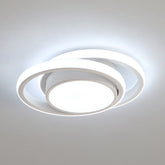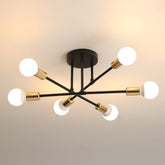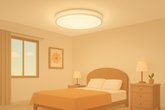Color Rendering Index (CRI): The Key to True-to-Life Lighting in Your Home and Business
🎨 What Is CRI (Color Rendering Index) and Why It Matters in Lighting
When choosing lighting, we often focus on brightness or color temperature. But there's a crucial metric that directly affects how we perceive color: the Color Rendering Index, or CRI. Though technical, CRI has a real-world impact on visual comfort and color accuracy. Let’s explore how it works and why it’s so important.
🔍 1. What Is the Color Rendering Index (CRI)?
CRI (Color Rendering Index) measures how well a light source reveals the true colors of objects compared to natural light. Rated on a scale from 0 to 100, the closer to 100, the better the color fidelity. A CRI of 100 means colors appear the same as they would under sunlight.
CRI is determined using 15 standardized color samples. The first 8 represent general colors (used to calculate the average Ra), while the remaining 7 include special shades such as skin tones and foliage green — essential for more precise color rendering in specific applications.
💡 2. Why Is CRI Important?
a. Visual Comfort
Poor CRI lighting distorts colors and forces the eyes to work harder, leading to fatigue and discomfort. High-CRI lighting delivers natural color rendering, reducing eye strain and creating a more pleasant visual experience.
b. Accurate Color Judgment
In fields like fashion, makeup, art, photography, and printing, color accuracy is critical. A high CRI allows designers, artists, and customers to see colors as they truly are — avoiding costly mismatches or misleading appearances.
c. Emotional Impact & Ambience
Lighting with high CRI makes spaces appear vibrant and lifelike — ideal for galleries or homes. On the other hand, selective use of low-CRI lighting with specific color tones can create dramatic or artistic moods, perfect for bars, stages, or creative venues.
🏠 3. Recommended CRI for Different Spaces
a. Home Lighting
• Living rooms, bedrooms: CRI ≥ 80 for balanced comfort and color realism
• Kitchens, bathrooms: CRI ≥ 80 to better see food freshness or hygiene
• Kids' rooms: CRI ≥ 90 to support color perception in developing eyes
b. Commercial Spaces
• Fashion & cosmetics stores: CRI ≥ 90 to display true product colors
• Art galleries & museums: CRI close to 100 for color-accurate exhibits
• Cafés & restaurants: CRI ≥ 85 with warm tones to enhance food appeal and atmosphere
c. Professional Environments
• Studios & film sets: CRI ≥ 95 for accurate image capture
• Printing: high-CRI lighting for reliable color matching
• Healthcare (surgery rooms, dermatology): high CRI needed for precise color diagnosis
🛒 4. How to Choose the Right CRI for Your Needs
a. Check Product Specifications
Always review the CRI value on packaging or spec sheets. Avoid unknown brands that may misrepresent performance. Stick with trusted lighting manufacturers.
b. Match CRI to Application
For basic areas like hallways, CRI ≥ 80 may suffice. For living spaces, creative work, or retail, always go for CRI ≥ 90 for natural, reliable lighting.
c. Compare Lighting in Real Use
If possible, test how different CRI levels affect the same object. You’ll see firsthand how higher CRI makes colors pop and look more lifelike.














